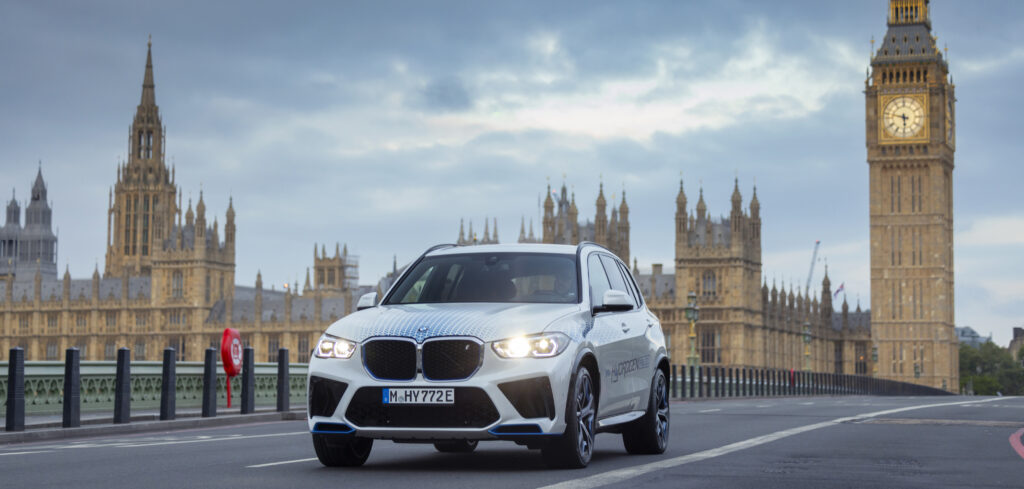Following a four-year development program, BMW’s iX5 Hydrogen is moving into the next phase of testing in a pilot fleet of fewer than 100 vehicles. The vehicle is being deployed to global locations for further demonstrations and trials, to give those not directly involved with the development program the opportunity to experience the BMW iX5 Hydrogen for themselves.
The fuel cell systems for the pilot fleet have been developed entirely in-house at BMW’s competence center for hydrogen in Munich and can generate a high continuous output of 125kW.
A chemical reaction takes place in the fuel cell between gaseous hydrogen from the vehicle’s tanks and oxygen from the air; maintaining a steady supply of both elements to the fuel cell’s membrane is vital for drive system efficiency. BMW has designed hydrogen-specific components for its new fuel cell system, consisting of a high-speed compressor with turbine and high-voltage coolant pump.
The individual fuel cells are sourced from Toyota. The two companies have collaborated on fuel cell drive systems since 2013.
The fuel cell system is partnered with BMW’s fifth-generation eDrive technology – made up of an electric motor, transmission and power electronics in a compact housing – on the rear axle and a power battery. The resulting powertrain has a maximum output of 295kW.
“Hydrogen is a versatile energy source that has a key role to play in the energy transition process and therefore in climate protection. After all, it is one of the most efficient ways of storing and transporting renewable energies,” said Oliver Zipse, chairman of BMW’s board of management. “We should use this potential to also accelerate the transformation of the mobility sector. Hydrogen is the missing piece in the jigsaw when it comes to emission-free mobility. One technology on its own will not be enough to enable climate-neutral mobility worldwide.”
For more on fuel cells, please click here.


